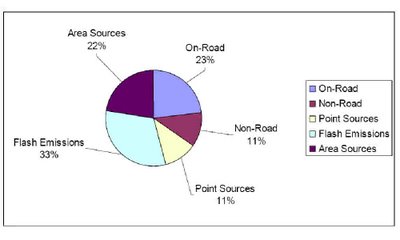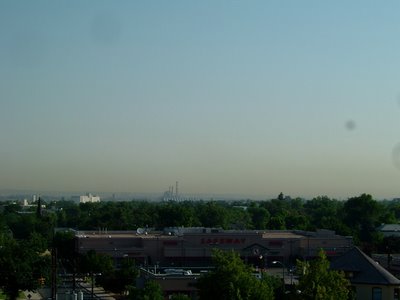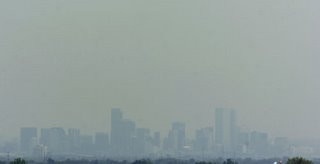Ozone Reductions Fall Short in 2005
Data from the state shows that several oil and gas companies failed to meet required ozone reductions in 2005. The chart below, which came from the Colorado Air Pollution Control Division, shows that 58% of oil and gas companies failed to achieve the required 37.5% reduction in emissions of ozone forming compounds north of Denver. Ten companies, or 38%, achieved no reductions in ozone forming compounds whatsoever.
| Company | Uncontrolled Tons/Year | Controlled Tons/Year | Average % Reduction |
| Aceite Energy Corp. | 42.59 | 24.84 | 41.67% |
| Blue Chip | 62.12 | 62.12 | 0% |
| | 48.79 | 48.79 | 0% |
| City/County | 60.24 | 34.14 | 43.32% |
| | 59.15 | 42.50 | 28.16% |
| Encana | 1864.18 | 976.98 | 48% |
| Exco Resources | 471.94 | 254.69 | 46.03% |
| Foundation Energy MG | 17.05 | 17.05 | 0% |
| Fountainhead | 34.3 | 34.3 | 0% |
| K.P. Kauffman Co | 571.12 | 530.49 | 7.12% |
| Kerr McGee | 7653.2 | 4460.4 | 41.7% |
| Machii Ross | 17.04 | 8.28 | 51.39% |
| Matrix Energy, LLC | 121.36 | 121.36 | 0% |
| Merit Energy Company | 1188.28 | 792.34 | 33.32% |
| Noble Energy Inc. | 11338.64 | 6908.51 | 39.07% |
| Paladin Energy | 41.92 | 41.92 | 0% |
| Petro-Canada | 2080.73 | 1190.19 | 42.80% |
| Petroleum Development | 3130.19 | 1702.00 | 45.63% |
| Petroleum Management | 22.83 | 22.83 | 0% |
| Red | 137.27 | 137.27 | 0% |
| Setex Oil and Gas | 190.38 | 85.70 | 54.99% |
| Starlight Resources | 135.07 | 119.82 | 11.29% |
| | 58.36 | 58.36 | 0% |
| | 550.04 | 550.04 | 0% |
| Whitewing Resources | 38.61 | 18.15 | 52.99% |
| Whiting Oil and Gas Corp. | 59.82 | 39.94 | 33.24% |
Some companies far exceeded the required 37.5% reduction in ozone forming compounds in 2005. Among them, Setex Oil and Gas seems to be the champion in ozone reductions, achieving a whopping 54.99% reduction. The majority of companies, however, failed to do their part to protect the Denver metro area from ozone pollution in 2005.
This summer, companies were required to achieve a 47.5% reduction in emissions of ozone forming compounds. We have heard that several companies may have failed to meet this requirement as well. In light of this summer's extremely unhealthy ozone pollution, this seems very likely.








